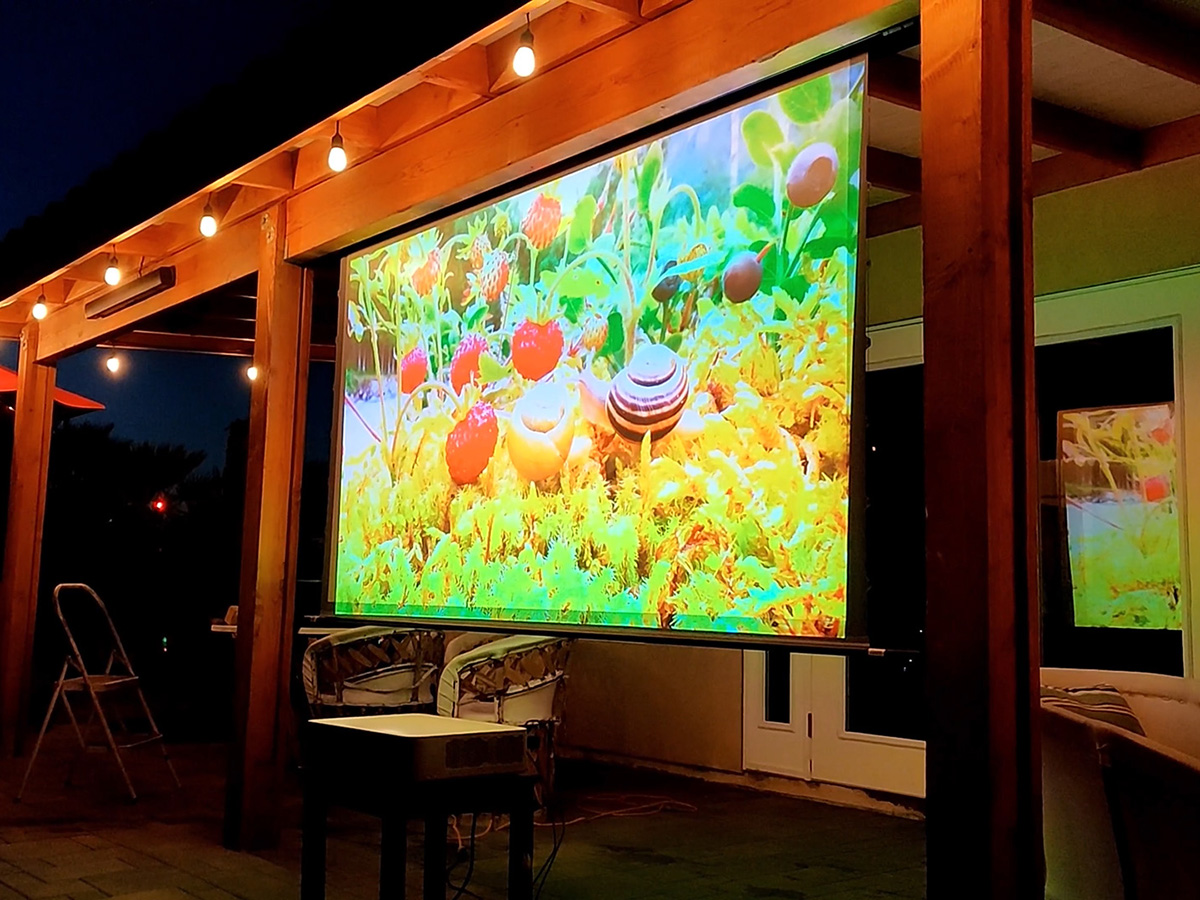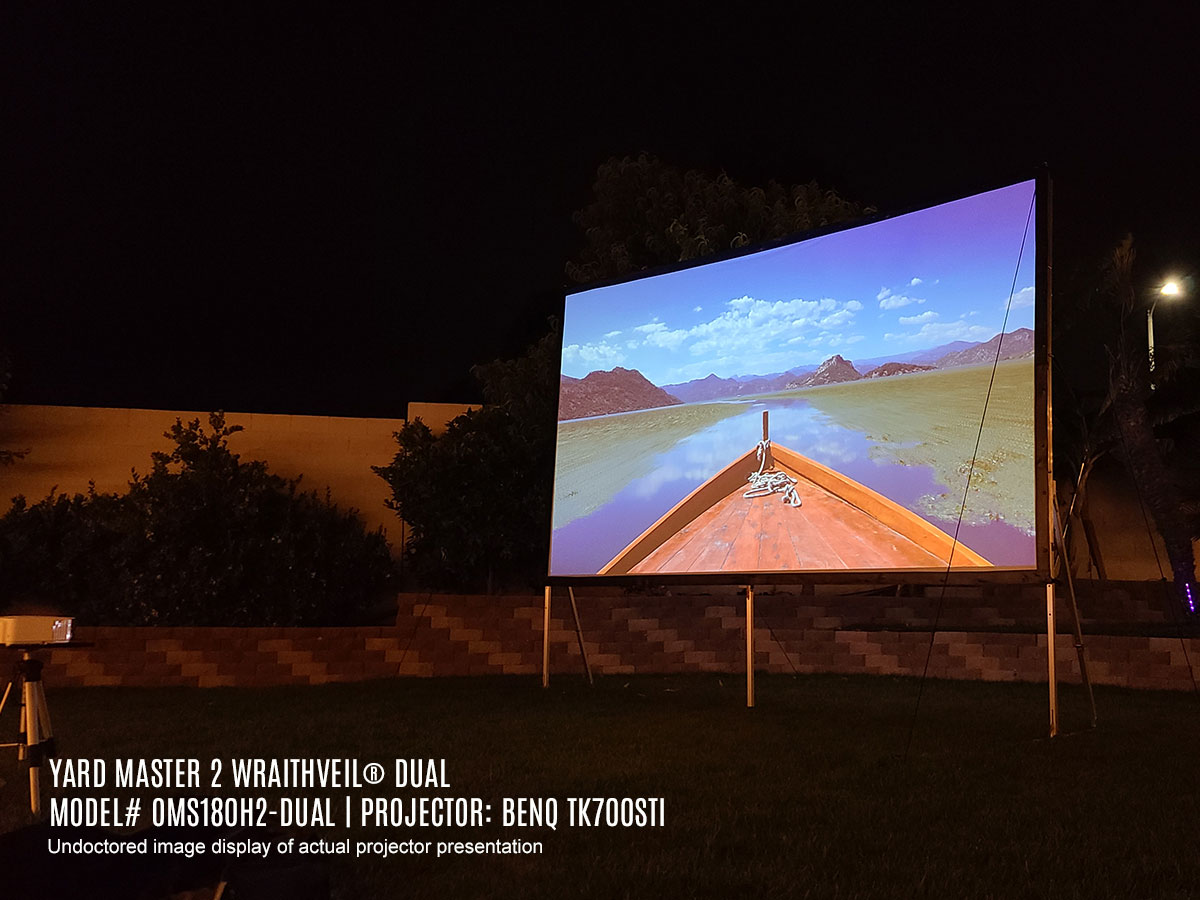Outdoor Projector Screens: A Complete Buying Guide

Crowding around a small TV with your friends and family for movie night is such a hassle. Good thing outdoor projector screens provide a larger-than-life viewing experience in the comfort of your own backyard. But with so many options available, choosing the right one for you can be overwhelming. That’s where this complete buying guide comes in–to inform you of different types of screens and important features like resolution and brightness to consider.
We’ll even provide tips for setting up your new projector screen and maximizing your viewing experience. So grab your popcorn and get ready to transform your outdoor space into a cinema under the stars with our comprehensive guide to buying an outdoor projector screen.
Benefits of outdoor projector screens
Outdoor projector screens offer a variety of benefits for movie lovers, sports enthusiasts, and anyone who enjoys spending time in their backyard.
One of the main advantages of outdoor projector screens is their larger screen size. You can enjoy a cinematic experience right in your backyard with a projector screen. You can also enjoy a more social experience with friends and family, watching together without being cramped around a small TV.
Another benefit of outdoor projector screens is the flexibility they offer. Unlike a TV, which is stationary, a projector screen can be moved around and set up wherever you like. This means you can enjoy your favorite movies and shows in different parts of your backyard or even take your projector screen with you on camping trips or picnics.
Finally, outdoor projector screens are a great way to maximize your outdoor space. Rather than having a backyard for barbecues and outdoor activities during the day, you can now enjoy it at night too. With an outdoor projector screen, you can create a cozy and intimate atmosphere for your family and friends to enjoy.
Types of outdoor projector screens
When it comes to outdoor projector screens, there are several types to choose from. Each type has advantages and disadvantages, so consider which will work best for your needs.
Portable screen
Portable screens are designed to be lightweight and easy to transport, making them ideal for outdoor movie nights and events. Portable screens come in various sizes and shapes and can be set up and taken down quickly. They are also more affordable than fixed-frame screens, making them a great option for those on a budget.
Fixed frame screen
As the name suggests, this type of screen has a fixed frame that stretches the screen material taut. Fixed frame screens are typically larger than portable screens, offering a more permanent solution. They are best suited for those who want a dedicated outdoor home theater experience.
Inflatable screen
Inflatable screens are made of durable, weather-resistant materials and can be set up quickly and easily. They are perfect for those who want a larger-than-life viewing experience without the hassle of a fixed frame screen. Inflatable screens are also great for events, as they can be easily transported and set up in different locations.
Features to look for in outdoor projector screens
1) Screen materials and quality
The quality of your outdoor projector screen is determined largely by the screen material. There are several different types of materials used for projector screens, each with its own advantages and disadvantages.
The most common material used for projector screens is vinyl. Vinyl screens are affordable and easy to clean, making them popular for those on a budget. However, they are not as durable as other materials and can be prone to wrinkles and creases.
Another popular screen material is polyester. Polyester screens offer better color accuracy and contrast than vinyl screens and are less prone to wrinkles and creases. However, they are more expensive than vinyl screens.
Finally, there are also screen materials made out of PVC or other types of plastic. These screens offer excellent durability and weather resistance, making them ideal for outdoor use. However, they can be more expensive than other materials.
2) Aspect ratios and resolution
Aspect ratio and resolution are important factors when choosing an outdoor projector screen. Aspect ratio refers to the width and height of the screen and is expressed as a ratio. The most common aspect ratios for projector screens are 16:9 and 4:3. A 16:9 aspect ratio is ideal for watching movies. In contrast, a 4:3 aspect ratio is better for watching TV shows and sports.
Resolution refers to the number of pixels on the screen. It is expressed as the number of horizontal and vertical pixels. The higher the resolution, the sharper and more detailed the image. The most common resolutions for outdoor projector screens are 1080p and 4K. 1080p suits most outdoor setups, while 4K is ideal for those who want the best picture quality possible.
3) Screen size and viewing distance
When choosing an outdoor projector screen, consider the size of the screen and the distance from which you will be viewing it. The larger the screen, the further away you will need to see the entire picture. It’s also important to consider the viewing angle, as some screens may have a narrow viewing angle, making it difficult for everyone to see.
A good rule of thumb is to choose a screen size at least two-thirds the width of your viewing area. For example, if your viewing area is 12 feet wide, choose a screen at least 8 feet wide. You should also ensure that the screen is positioned at a comfortable height for everyone to view.
4) Weather-resistant features
Since outdoor projector screens are designed to be used outside, you need to choose one that is weather-resistant. Look for screens made from durable materials that can withstand rain, wind, and other outdoor elements. You should also look for screens that have UV protection, as this can help prevent fading and damage from the sun.
Another weather-resistant feature to consider is the screen’s ability to resist mildew and mold. This is especially important if you live in a humid climate or plan to use your projector screen in an area where moisture is a concern.
5) Portability and ease of setup
If you plan to use your outdoor projector screen for events or gatherings, you have to choose one that is easy to set up and transport. Look for lightweight screens that come with a carrying case or bag for easy transport. You should also consider how long it takes to set up the screen, as some screens may require more time and effort than others.
6) Projector compatibility
When choosing an outdoor projector screen, you definitely need to consider the compatibility with your projector. Make sure that the screen you choose is compatible with the type of projector you have and that it can accommodate the aspect ratio and resolution of your projector. You should also consider the throw distance of your projector, as this will determine how far away the projector needs to be from the screen.
Maintenance and cleaning tips
To keep your outdoor projector screen in good condition, it’s important to take care of it properly. After each use, clean the screen with a soft cloth or brush to remove any dirt or debris. If the screen is particularly dirty, you can use a mild soap and water solution to clean it.
You should also store your screen correctly when it’s not in use. Keep it dry, cool, and protect it from moisture and sunlight.
Conclusion and final recommendations
Outdoor projector screens are a great way to enjoy movies, sports, and other entertainment in the comfort of your own backyard. We recommend the Elite Screens Yard Master 2 as the top outdoor projector screen on the market. This screen offers excellent picture quality, is durable and weather-resistant, and is easy to set up and transport. With that said, be sure to consider your own needs and preferences when making your final decision.


